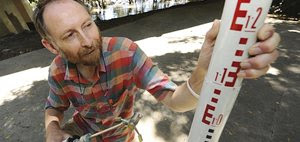A. You ask a simple question for which there is not a simple answer.
 | |
| Before getting an acceptance criteria, it may be necessary to first invent a way to quantify results. |
For structural applications, an engineer can use almost any product by submitting structural calculations and other evidence to the building code official in a local jurisdiction. But it would be irresponsible for an engineer to use a product until it was well tested and understood. This could include costly fire-resistance testing and long term testing for performance characteristics such as creep, the deformation that happens over time. If the product is proposed for highway or bridge construction, state agencies may want to conduct field trials for several years to make sure of its durability.
It becomes easier for an engineer or architect to use a product if it is included in the building code. Only well established products are included in codes such as the International Building Code. However innovative materials can get reviewed by the International Code Council - Evaluation Service, and their ICC-ES Report can then be presented to the local building code officials that make the ultimate decision about whether a product can be used in their jurisdiction. ICC-ES needs to have an "Acceptance Criteria" before they can evaluate an innovative project, and getting one can be tedious and expensive.
I have seen it take hundreds of thousands of dollars and years of effort to test a new product, get an acceptance criteria written, and then get an ICC-ES report. But that is only the beginning. One still has to get the approval of designers and builders to really have a successful product introduction.
Time-to-approval is often inverse to the cost. One of my clients got an acceptance criteria for a cementitious product in just six months, but only because they had a decade of academic testing and demonstration projects to draw upon, and could afford to hire the very best consultants. But along the way, they determined that winning customer acceptance would cost more and take longer than they had hoped, and decided to not commercialize the technology.






